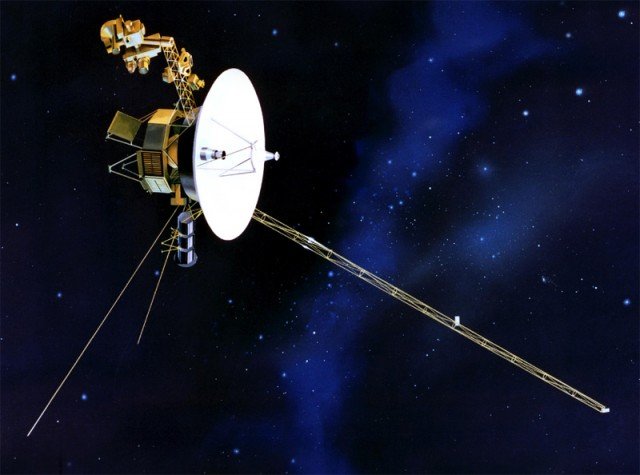Voyager-1 becomes first manmade object to leave Solar System
Voyager-1 has become the first manmade object to leave the Solar System.
Scientists say the probe’s instruments indicate it has moved beyond the bubble of hot gas from our Sun and is now moving in the space between the stars.
Launched in 1977, Voyager was sent initially to study the outer planets, but then just kept on going.
Today, the veteran NASA mission is almost 12 billion miles from home.
This distance is so vast that it takes 17 hours now for a radio signal sent from Voyager to reach receivers here on Earth.
“This is really a key milestone that we’d been hoping we would reach when we started this project over 40 years ago – that we would get a spacecraft into interstellar space,” said Prof. Ed Stone, the chief scientist on the venture.
Sensors on Voyager had been indicating for some time that its local environment had changed.
The data that finally convinced the mission team to call the jump to interstellar space came from the probe’s Plasma Wave Science (PWS) instrument. This can measure the density of charged particles in Voyager’s vicinity.
Readings taken in April/May this year and October/November last year revealed a near-100-fold jump in the number of protons occupying every cubic metre of space.
Scientists have long theorized such a spike would eventually be observed if Voyager could get beyond the influence of the magnetic fields and particle wind that billow from the surface of the Sun.
When the Voyager team put the new data together with information from the other instruments onboard, they calculated the moment of escape to have occurred on or about 25 August, 2012. This conclusion is contained in a report published by the journal Science.
“This is big; it’s really impressive – the first human-made object to make it out into interstellar space,” said Prof. Don Gurnett from the University of Iowa and the principal investigator on the PWS.
On 25 August, 2012, Voyager-1 was some 121 Astronomical Units away. That is, 121 times the separation between the Earth and the Sun.
Although now embedded in the gas, dust and magnetic fields from other stars, Voyager still feels a gravitational tug from the Sun, just as some comets do that lie even further out in space. But to all intents and purposes, it has left what most people would define as the Solar System. It is now in a completely new domain.
Voyager-1 departed Earth on 5 September 1977, a few days after its sister spacecraft, Voyager-2.
The pair’s primary objective was to survey the planets Jupiter, Saturn, Uranus and Neptune – a task they completed in 1989.
They were then steered towards deep space. It is expected that their plutonium power sources will stop supplying electricity in about 10 years, at which point their instruments and their 20W transmitters will die.
Voyager-1 will not approach another star for nearly 40,000 years, even though it is moving at 100,000mph.
“Voyager-1 will be in orbit around the centre of our galaxy with all its stars for billions of years,” said Prof. Ed Stone.
The probe’s work is not quite done, however. For as long as they have working instruments, scientists will want to sample the new environment.
The new region through which Voyager is now flying was generated and sculpted by big stars that exploded millions of years ago.
There is indirect evidence and models to describe the conditions in this medium, but Voyager can now measure them for real and report back.
[youtube 8Ddt8xnnGGA]

